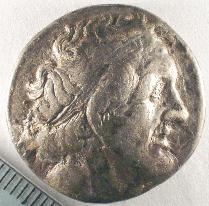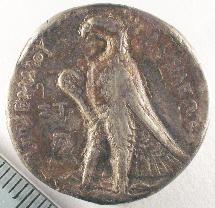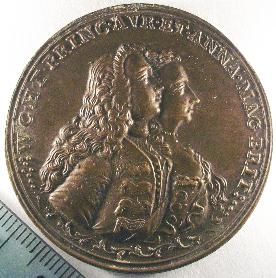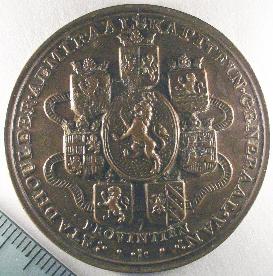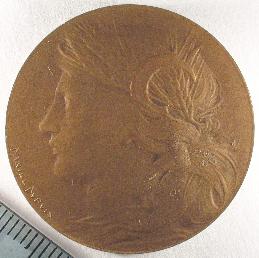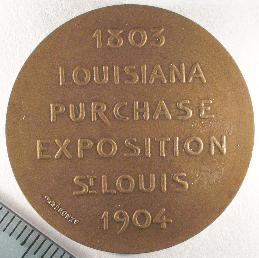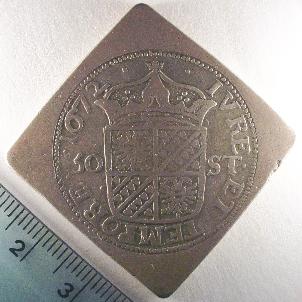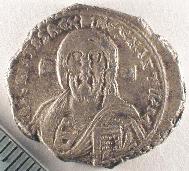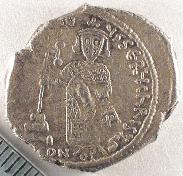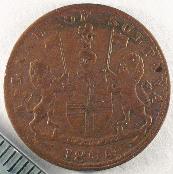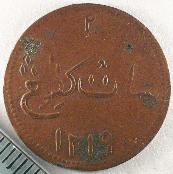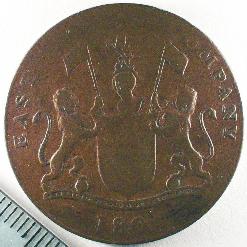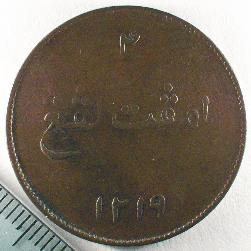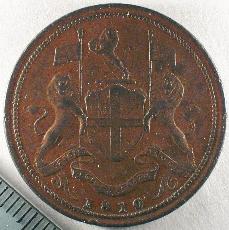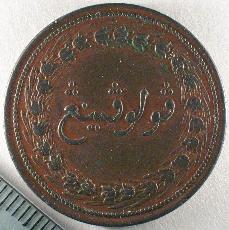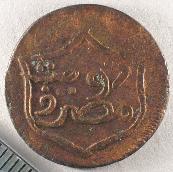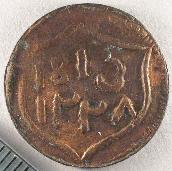Chatter
archive
also available
| Chicago Coin Club |
|---|
| Volume 49 No. 10 |
October 2003 |
|---|
Minutes of the 1017th Meeting
President Mark Wieclaw called the 1017th meeting of the Chicago Coin Club to order on September 10,
2003 at 7:03PM. The meeting was held at 1 Bank One Plaza.
The August meeting minutes were not submitted in time to appear in the Chatter.
Treasurer Steve Zitowsky gave a treasury report as follows:
| TCF Checking Account |
$2,130.56 |
| Bank One CD |
1,456.01 |
| Bank One CD |
1,457.39 |
| Dreyfus Money Market |
1,869.83 |
| TOTAL |
$6,913.79 |
There were four guests present: Peter Guzman, Dean Candy, Bob Graves and John Tandrich.
First Vice President Robert Feiler outlined our upcoming meetings:
-
October - Bob Weinstein will speak on Indo Sasanian coinage.
-
November - The Annual Club Auction,
-
December - The annual Banquet (at Marcello's)
Bob then introduced the featured speaker Mr. Richard Hamilton, CCC member and former Secretary of the
club. Dick spoke eloquently on the histories of the numerous Chicago railways and related companies as he
presented stock certificates from the following companies: Rock Island, Illinois Central, Chicago
Burlington & Quincy, Chicago Northwestern, Chicago & Alton, Cleveland Cincinnati Chicago & St Louis,
Wagner Palace Car, The Pullman Company, Chicago Portage & Superior and the Union Station Company.
The vignettes and engravings were remarkable in their artistry and technical execution.
Robert Feiler thanked Dick for his presentation and presented him with the featured speakers medal and
an ANA educational certificate.
Second Vice President Jeff Rosinia announced there were 9 attendees who were participating in show &
tell. They presented as follows:
-
Bob Feiler - An Egyptian Tetradram, an obsolete $2000 note, and 4 fractional notes.
-
Steve Zitowsky - Medal of Queen Ann and William Prince of Holland, a temperance token, paper
box from the Paris mint with a medal from the 1904 St Louis Fair and a Dutch siege coin from
1672.
-
Mark Wieclaw - An as grave of the Roman republic, a ½ ounce $250 coin of Sierra Leon with a
diamond and a coin of Justinian II, the first to depict the figure of Christ
-
Don Dool - tokens and coins of Indonesia and Malaysia by principalities and Trading Companies
-
Sharon Blocker - 2 "coins" from the Pobjoy mint, Notgeld from Togo, a tri metallic coin, and the
Krause World Coin Catalog in which Sharon is a listed contributor
-
Carl Wolf - Framed interest bearing bond of the Trans Caucus Railroad with coupons clipped up
to July of 1918, the Bolshevik revolution. Carl researched and framed this not only to further
scripophily but also in an attempt to ingratiate himself to his mother in law who is from that
region. Good luck Carl.
-
Steve Huber - spectacular Talers, gorgeous rubles from the 18th century
-
Chuck Jacobs - Chuck is a new member and presented several beautiful and captivating Japanese
notes from the Pacific theater of World War II. These were issued by the Japanese government,
US Government and included some military payment certificates.
-
David Simpson - "Moon silver" from the Franklin Mint, and circulation finds consisting of a half
dollar and a 2-dollar note.
Reading of Applications for Membership:
There were no readings for membership.
Old Business:
Lyle Daly advised the club that the first meeting of the CCC Discussion Group was a great success. The
second gathering will be on September 24th at the business offices of Harlan Berk. The topic will be coin
conservation and will be moderated by member Tom DeLorey. A reminder email will be sent.
A meeting of the 85th anniversary committee will meet Wednesday September 17th at Connie's Pizza. Mark
Wieclaw will send a reminder email to committee members.
Steve Zitowsky noted that the Tally sticks for the CICF giveaway to be developed by Bob Leonard have
been purchased.
New Business:
The cost for the Year End Banquet needs to be established. Lyle Daly, Steve Zitowski and Bob Feiler will
review the documentation and recommend a per person price.
Mark Wieclaw recounted that after much deliberation, the life membership for Lyle Daly was approved last
month, and a membership card was presented to Lyle.
Carl Wolf shared with the club an article on Autism and we all noted some similarities between our hobby
and the symptoms of this affliction. Thank you Carl.
Member Don Perlman has donated a portion of his personal library to the club. Members are asked to
consider if these volumes should be included in the November auction.
The meeting was adjourned at 9:35 p.m.
Respectfully submitted by Lyle Daly
Speaker's Wor[l]d
Stock Certificates from Illinois Railroads
Presented by Richard Hamilton to our September 10, 2003 meeting.
Last month's talk on Early Trains on Obsolete Currency,
this talk on Stock Certificates from Illinois Railroads,
maybe we should find some stamps with trains for mailing this Chatter.
Although it took some years for railroads to reach Illinois,
the state's geography and location guaranteed it a prominent presence within
the burgeoning railroad industry.
The rich farmland and growing cities produced much material needing shipment to market,
its long north-south run with minimal obstructions meant that much east-west
commerce could easily cross it,
and the long obstruction of Lake Michigan to the north
provided a natural funnel on east-west commerce.
Richard's presentation concentrated on the stock and bond certificates
of railroad companies having a presence in the Chicago area.
First shown was a 100 share certificate of the Rock Island Line
that Richard acquired from a Rock island employee
outside the railroad's bankruptcy auction held at the old LaSalle Street Station;
at that time, bonds were available at the store in the station.
Originally chartered in 1847, by 1852 track reached from Chicago to Joliet.
This line ran the first train across the Mississippi River in 1856,
was represented by Abraham Lincoln for a time,
was part of the trans continental railroad system,
and had the first train robbed by the (Jesse) James gang.
Next shown was a 100 share certificate of the Illinois Central,
also known as the Mainline of Mid America.
It was the major north-south railroad operating between the Great Lakes
and the Gulf of Mexico;
the stock certificate included a system route map.
Chartered in 1851, it was the first land grant railroad.
The line established towns every ten miles along its route,
naming the towns for major shareholders and employees.
Casey Jones was the most famous employee of this railroad
which, in 1999, merged into the Canadian National system.
Richard's favorite certificate is a 100 share certificate dated 1901
of the Chicago Burlington & Quincy Railroad (CBQ).
Operating a line between Batavia and what is now West Chicago by 1850,
it first grew only in Illinois, but eventually reached Denver and had many railroading firsts,
including a printed telegraph in 1910, radio on a train in 1915,
and the streamlined Pioneer Zephyr train in 1934.
In 1970, it merged with three other railroads to form the Burlington Northern,
which merged a few years ago with the Santa Fe to form the BNSF.
A stock certificate of the Chicago Northwestern Railway Corporation
has a unique appearance due to the trackage around its perimeter;
backage tags and other railroad elements are also included
to provide an effect Richard has never seen elsewhere.
Started as the Galena & Chicago in the late 1840s,
and eventually reached as far west as Wyoming and as far south as St. Louis.
This company is known for many firsts, including
the first Chicago passenger depot in 1848,
the first cupola caboose,
and the first postal car.
In 1995, it became part of the Union Pacific Railroad.
A discussion of the nomenclature used to identify train engines
arose while viewing the above certificate.
For example, the description 4-6-2 means four (small) leading wheels,
six (large) driving wheels,
and two trailing wheels.
Afer the meeting Don Dool distributed through our email list
a web site which describes the matter in detail;
it is at
http://www.nashvillentrak.org/Whyte.html.
Richard next showed a $1000 3% gold 50 year bond
of the Chicago and Alton Railroad,
with a beautiful vignette.
This line is remembered as the first to use Pullman sleeping cars.
Another less-familiar line was the Cleveland Cincinnati Chicago & St. Louis railroad
which was formed from the merger of many small, local lines.
Although neither reflected in its name or on the shown certificate,
this line was part of the New York Central system.
A number of companies made sleeping cars, and Richard showed
stock certificates from three of them starting
with an 1893 certificate from the Wagner Palace Car Company.
Next up was a certificate from the Woodruff Sleeping Parlor Coach Company of Pennsylvania,
and he concluded with a Pullman certificate.
Pullman was the most famous manufacturer of these cars,
and is best remembered in the Chicago area for the company town now a Chicago neighborbood.
The company was started in 1867, and the town of Pullman was starte in 1880.
Richard finds his 100 share certificate appealing due to a stamp on the face
identifying it as being sold by the Pullman Free School of Manual Training.
An 1881 $1000 first mortgage land grant bond of the Chicago Portage and Superior Railroad
is a reminder of this railroad which failed in 1882,
leaving work crews stranded in cold weather after passing through Portage, Wisconsin.
The governor of Wisconsin interceded and it became part of the Omaha Railroad,
which later became part of the Chicago and Northwestern.
Richard concluded his talk by showing a specimen, serial #0,
of the gold bond for the Chicago Union Station Company, due 1963.
The vignette shows the planned station, which appears quite similar
to the station which still stands today,
and through which some club members travel to attend our meetings.
Although, at its peak, 300 trains arrived and departed daily,
most trains now serve the local commuter market,
far outnumbering Amtrak's inter-city trains.
They may no longer run their own passenger trains,
many small branch lines have been abandoned,
and most major lines have been lost through mergers,
but these bond and stock certificates provide an artistic and enduring
reminder of times and places in our nation's histry.
Show and Tell
Each image has a scale in the lower-left corner,
with the tics spaced 1 mm apart.
Because the brightness and contrast were manipulated on a computer,
the coloring of a coin's image differs from the coin's actual coloring.
-
Bob Feiler
showed an ancient coin, and then some 19th century paper:
-
An Egyptian silver coin of Ptolemy I;
this tetradrachm was bought some time ago, but brought in now to get members' opinions.
-
The most recent addition to his collection of odd-denominatoin obsolete notes,
$2000 Bank of United States with serial number 9222.
The reverse has stamped markings showing the rate of interest paid.
-
Four 1862 fractional notes issued by Lyman Aybault of Nunda Station.
These had been bought years ago, but Bob could never find anyone who
knew where Nunda Station was located.
Until he asked Tom DeLorey, who suggested a Google search on the web.
That resulted in much information about a small town
in Livingston County, New York.
The name Nunda came from a Seneca Indian tribe which once lived in the area
along the Genesee river and the Keshequa stream.
Originally founded in 1808, the town developed as the Genesee Valley Canal
from Rochester to Mt. Morris reached the town in 1851.
The railroads started coming into the area in the 1850s and the small
village of Nunda Station, located about 3 miles from Nunda, was a station
for the Erie Railroad.
The town now is known as Dalton.
This showed once again why we all enjoy the coin and paper money hobby so
much, because of all of the off shoots of information we can gather about
such wide ranging subjects.
-
Steve Zitowsky
brought a wide variety of recently purchased items.
-
A 1714 bronze medal from the Netherlands, bought during a recent trip there.
The obverse features Queen Anne of Great Britain and Prince Henry of Holland,
and the reverse features the coat of arms of the Netherlands.
-
A cylidrical container containing a few tokens promoting wisdom and pleasure;
probably promoting temperance, was Steve's conjecture.
-
A 1904 Louisiana Purchase Exposition medal, with "DANIEL DUPUIS" near the obverse rim,
led to a search on the Internet which provided much information
on this sculptor.
Born in 1849, he was murdered in 1899 by his deranged wife;
some pieces were issued after his death.
-
A 1672 50 stuivers of the Netherlands.
This uniface klippe was struck after the siege of Groningen,
by the besieging forces.
-
Mark Wieclaw
showed three coins.
-
A cast As Grave of the Roman Republic;
the obverse shows a scallop shell,
and the reverse shows a caduceus with two pellets to indicate its value.
-
A 1997 $250 coin from Sierre Leone, marking the centennial of
Queen Victoria's Diamond Jubilee.
This .9999 fine gold coin has a six-point diamond,
and the catalog states that the gold pieces were commissioned by an individual;
it was sold to Mark for bullion.
-
A silver Byzantine piece of Justinian II's first reign;
gold issues are scarce, but this piece is only the ninth known in silver.
The obverse bears the first depiction of Christ on a coin,
and the emperor is on the reverse;
this soon became the standard design format for Byzantine coins.
-
Don Dool
showed copper pieces from the Indonesia Malaysia area:
-
An 1804 piece from the Island of Sultana.
Except there is no such place.
Actually struck by Singapore merchants,
following the general design used by the East India Company.
-
A weakly struck 1804 piece from the East India Company, for Sumatra.
-
An 1810 piece of the East India Company for Penang (Prince of Wales Island).
-
An 1813 piece from Molucca which was a private state from 1812-1818,
when it reverted to the Dutch.
-
A well worn 1814 piece from Java,
bearing the emblem of the United East India Company (a bee,
signifying occupation by the British).
-
Sharon Blocker
showed a variety of recently acquired pieces:
-
Two pieces from the Pobjoy Mint: a $10 hologram piece for British Virgin Islands;
and a 60 pence Isle of Man piece with a spinner, to form a Euro currency converter.
-
An attractive but uncertain piece from eBay;
a small, colorful 75 pfennig note from Togo -- is it notgeld?
-
A 1991 Andorran addition to her collection of bi- and tri-metallic pieces,
having a brass center, a silver ring, and then a brass ring.
-
A Krause World Coin Catalog recently arrived in the mail,
and she is listed as a contributor.
She calls them when she spots any error or problem in the catalog,
and also when she finds unlisted items.
-
Carl Wolf,
still away from his usual exhibit theme of odd and curious money,
showed a framed 1912 interest bearing Russian 4½% bond of the Trans Caucus Railroad.
The railroad ran between the Black and Caspian Seas (through modern day Georgia and Azerbaijan),
and the last missing (redeemed) coupon was for December, 1917.
The text is in Russian, Dutch, and German; reflecting the European investments
in the Russian infrastructure to help build a modern "Silk Road" route to Asia.
The father of Carl's mother-in-law had worked for that railroad during
its early days in the Czarist period.
-
Steve Huber
showed some recently acquired large silver pieces.
-
Two private medals (gedank talers) from 1914:
one featuring General von Kluck and the other Rupert Krompe of Bavaria.
-
For his city view taler collection,
a 1768 Nuremburg piece with a double eagle on the reverse.
-
Three Russian rubles out of the same collection, all with a similar appearance:
a 1723 Krasny mint ruble of Peter the Great,
a 1738 St. Petersburg mint ruble of Anna (Peter's daughter),
and a 1751 ruble of Elizabeth.
-
Chuck Jacobs
showed U.S. occupation notes for Japan.
He started with a Japanese 1930 10 yen note as reference,
then showed one of not as good quality;
it had been printed in the U.S. with Japanese writing replacing the reverse of the original.
At the start of the occupation, the U.S. demanded all money be turned in,
then reissued the notes with a validation sticker attached;
Chuck showed a picture of the validation sticker usedfor each denomination of note.
Then he showed the currency issued for U.S. servicemen,
in A (for Korea) and B (for Japan) series, in 10 sen, 50 sen, and 1 yen denominations;
and concluded with a 10 yen note used after the occupation notes
but just before inflation pushed the 1947 exchange rate to 350 yen to the U.S. dollar.
-
Dave Simpson
started with a a moon medal, included in some Franklin Mint material
he inherited in 1972.
The "moon medals" were struck on silver carried around the moon in Apollo 14;
the medals were given, at no charge, to those Franklin Mint customers who
belonged to its Collectors Society following an uproar after
reports that the medals would be sold.
Dave concluded by mentioning that he gets rolls of half dollars and
packs of $2 notes from the bank to spend,
and mentioned that sometimes a 40% silver coin or a note from 1928-57 appears.
Our 1018th Meeting
| Date: | October 8, 2003 |
| Time: | 7:00 PM |
| Location: | Downtown Chicago
1 Bank One Plaza Building
(formerly the First National Bank Building);
18th Floor, on Dearborn between Madison and Monroe.
Enter the building at the South entrance of the Dearborn side,
sign in at the security desk and take the elevator to the 18th floor.
Please remember the security measures at our meeting building:
give a club officer the names of all your guests prior to the meeting day;
and everyone must show their photo-ID at the security desk. |
| Featured speaker: |
Robert Weinstein - Indo-Sasanian Coinage |
|
Indo-Sasanian coins were first issued about 550 AD by the Gujuras, a Hun tribe.
Robert Weinstein will show these coins struck in Northern India
for several hundred years and derived from a Sasanid Persian prototype.
Designs were copied and the copies were copied,
resulting in a rapid degradation of design.
Some varieties are barely recognized when compared to the original type.
|
Call for Club Auction Lots
November 12, 2002
The club auction is scheduled for 7PM, at the start of the
regular November club meeting. In the past few years, club
related material (and Chicago area numismatic items) have
had the best results.
Some printed material also has shown good results.
Please consider using the club auction
to dispose of the numismatic items you no longer need.
You can place a reserve on each lot, and there is no commission
charged to either the buyer or seller. Auction lot viewing will
be held before the meeting starts, and again briefly before the
auction starts.
The November Chatter will contain a list of all auction lots
that are known to us by Friday, October 24. You can either
send your list to Paul Hybert by Friday, October 24
if you plan to bring your lots with you to the November meeting, or you can
ship your items to Bill Burd by Friday, October 24.
Bill Burd
CCC-A Dept.
Chicago Coin Company
6455 W. Archer Ave.
Chicago, IL 60638
chicagocoin@worldnet.att.net |
|
Paul Hybert
312-791-9001, evenings
prhybert@worldnet.att.net |
Important Dates
| October |
8 |
CCC Meeting - Featured Speaker - Robert Weinstein on Indo-Sasanian Coinage |
| |
| November |
12 |
CCC Meeting - Club Auction - no featured speaker |
| |
| December |
10 |
CCC Meeting - Annual Banquet - Featured Speaker to be announced |
Birthday and Year Joined
| November |
2 |
Alexander Basok |
1998 |
| November |
5 |
Scott E. Douglas |
1996 |
| November |
5 |
Phyllis Johnson |
1987 |
| November |
8 |
Brian A. Heil |
1981 |
| November |
9 |
Tom Ryan |
1960 |
| November |
11 |
J. Vincent Swift |
1991 |
| November |
24 |
Jeffrey F. Bernberg |
1975 |
| November |
27 |
Robert Feiler |
1994 |
Chatter Matter
All correspondence pertaining to Club matters
should be addressed to the Secretary and mailed to:
CHICAGO COIN CLUB
P.O. Box 2301
CHICAGO, IL 60690
Visit Our Web Site
http://www.ChicagoCoinClub.org/
Contacting Your Editor
| Paul R. Hybert
|
| prhybert@worldnet.att.net |
Club Officers
| Mark Wieclaw | - President |
| Robert Feiler | - First Vice President |
| Jeff Rosinia | - Second Vice President |
| |
| Directors: | Lyle Daly
Mike Metras
Steve Zitowsky
Carl Wolf |
| |
| Other positions held are: |
| Robert Weinstein | - Secretary |
| Steve Zitowsky | - Treasurer |
| Paul Hybert | - Chatter Editor |
| Phil Carrigan | - Archivist |
